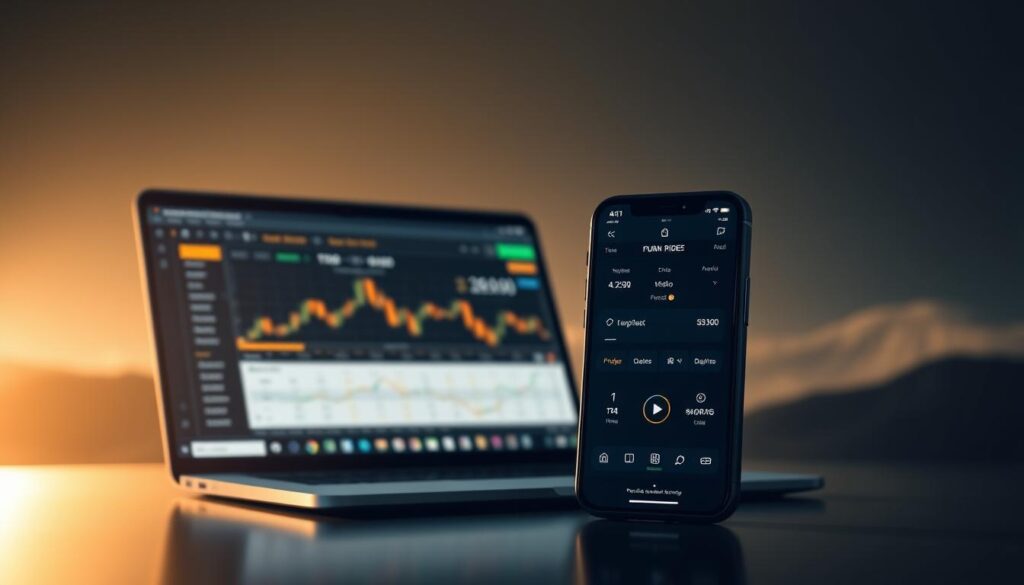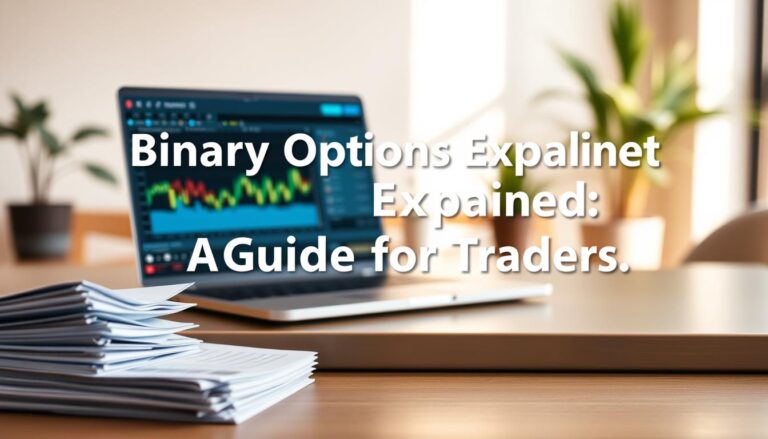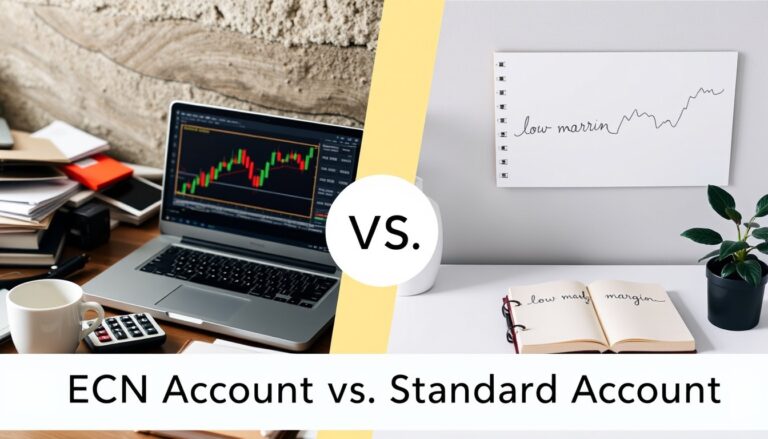Trade Gold Online: Tips and Strategies for Success
Precious metals have long served as a cornerstone of diversified investment portfolios. Today’s digital platforms empower individuals to engage with global markets 24/7, a privilege once reserved for institutional players. This shift has democratized access to one of history’s most sought-after assets, creating opportunities across experience levels.
Navigating these opportunities demands more than basic awareness. Success hinges on analyzing market trends, interpreting economic indicators, and implementing robust risk management practices. Real-time price tracking tools and advanced charting software have become essential for identifying patterns and timing decisions effectively.
The digital transformation of commodity markets has prioritized accessibility without compromising security. Modern platforms offer intuitive interfaces while maintaining rigorous safeguards for transactions. These advancements allow investors to diversify portfolios with confidence, even during periods of volatility.
This guide explores proven techniques for capitalizing on price movements in dynamic markets. From selecting reliable platforms to refining entry and exit strategies, readers will discover actionable insights. Whether starting a new journey or enhancing existing skills, these principles aim to sharpen decision-making in fast-paced trading environments.
Understanding the Fundamentals of Gold Trading
For millennia, civilizations have measured prosperity through a lustrous yellow metal that transcends borders and eras. This enduring legacy shapes how modern investors approach markets, blending ancient principles with cutting-edge financial systems.
From Ancient Relic to Modern Asset
The UK’s 1821 gold standard marked a pivotal shift, pegging currency value to physical reserves. When nations abandoned this system – Britain in 1931, the US in 1971 – the metal evolved into a freely traded commodity. Prices now respond to global supply chains and investor sentiment rather than government mandates.
Tangible vs. Digital Exposure
Physical ownership offers direct control through bullion or coins, but demands secure storage solutions. Digital alternatives present distinct advantages:
- Futures contracts locking in future prices
- ETFs tracking market movements
- Options providing strategic flexibility
Market newcomers often grapple with counterparty risks in digital instruments. Seasoned investors typically blend both approaches, using physical holdings as stability anchors while leveraging derivatives for tactical moves.
Market Overview: Gold as a Commodity and Investment

Two distinct forces drive the value of a yellow metal: factory floors and financial portfolios. This dual role creates unique price dynamics, balancing practical applications with wealth preservation strategies.
Industrial sectors consume over 30% of annual production for electronics and medical devices. Meanwhile, investors acquire physical bars or digital equivalents during economic uncertainty. Key factors influencing availability include:
- Mining outputs from major producers like China and Australia
- Central bank reserve adjustments
- Currency exchange rate shifts
During stock market declines, this asset often gains value as investors seek stability. Its inverse relationship with equities makes it a strategic diversifier. For example, prices surged 25% during the 2020 global economic contraction while indices plummeted.
Market activity spans quick speculative moves and multi-decade holding strategies. Jewelry demand in Asia accounts for 50% of annual consumption, while exchange-traded funds attract institutional capital. Savvy participants monitor manufacturing trends alongside inflation data to anticipate movements.
Global events like geopolitical tensions or supply chain disruptions cause immediate price reactions. Successful strategies require analyzing both commodity cycles and investment flows across continents.
Navigating Risks in the Gold Market

Financial markets present both opportunities and challenges, particularly when dealing with leveraged instruments. Understanding potential pitfalls helps investors protect their capital while pursuing strategic goals. This awareness becomes critical when using tools like spread bets or CFDs, where rapid price shifts can amplify losses.
- Leverage pitfalls: CFDs and spread bets magnify gains but also losses. Statistics show 69% of retail accounts lose money with these products.
- Margin dangers: Trading on margin lets investors control larger positions, but losses can exceed initial deposits.
- Counterparty vulnerabilities: Derivatives rely on platform stability, making broker research essential.
Market volatility often spikes during geopolitical crises or central bank announcements. These events trigger sudden price swings that can erase gains quickly. Currency fluctuations and economic data releases add further complexity to decision-making.
Smart strategies involve setting stop-loss orders and diversifying exposure. Physical holdings provide stability, while digital instruments offer flexibility. Regular portfolio reviews help balance these approaches, ensuring alignment with risk tolerance levels.
Getting Started: How to Start Trading Gold
Entering the world of precious metals begins with choosing a reliable platform. Modern services like BullionVault offer 24/7 access through mobile apps, letting users buy and sell in dollars, pounds, euros, or yen. This flexibility bridges the gap between casual investors and professional market participation.
Newcomers must decide between physical ownership and digital instruments. Physical bullion provides tangible security but requires storage solutions. Digital options like ETFs or futures contracts cater to those prioritizing convenience and liquidity. Key platform features to evaluate include:
- Regulatory compliance for fund security
- Low transaction fees and transparent pricing
- Educational resources for skill development
Account creation involves identity verification and selecting funding methods. Many platforms provide demo accounts to practice strategies risk-free. Successful participants establish clear plans based on market research rather than impulsive moves.
Mobile apps enable monitoring price shifts during commutes or work breaks. However, beginners should prioritize learning economic indicators over chasing quick profits. Consistent education builds the foundation for informed decisions in volatile markets.
Expert Tips to Trade Gold and Optimize Your Trading Strategy
Mastering market dynamics requires precision and adaptability in equal measure. Professionals focus on identifying value disparities through meticulous analysis rather than chasing trends. The core principle remains straightforward: acquire assets when undervalued and exit when premiums emerge.
Seasoned participants employ a three-tiered analytical framework. Technical indicators map price patterns, while macroeconomic data reveals underlying drivers. Sentiment metrics gauge market psychology, creating a comprehensive decision-making toolkit. This approach helps avoid emotional reactions during volatility spikes.
Position management separates successful strategies from hopeful gambles. Allocating 1-3% of capital per transaction limits downside exposure without capping upside potential. Traders often scale positions gradually as market confirmations accumulate.
Fee structures significantly impact long-term results. Spread comparisons across platforms reveal cost differences that compound over hundreds of transactions. Many overlook withdrawal charges and currency conversion fees that silently erode profits.
Multi-chart analysis proves invaluable. Weekly trends establish directional bias, while hourly candles pinpoint entry triggers. This dual-lens perspective helps filter market noise. Regular strategy audits identify effective patterns worth replicating and flawed assumptions needing revision.
Adaptation separates enduring success from fleeting wins. Markets reward those who refine methods based on performance data rather than clinging to outdated playbooks. Continuous learning transforms theoretical knowledge into executable edge.
Leveraging Technology for Online Gold Trading

Digital innovation has reshaped how investors interact with precious metals. Advanced tools now bridge the gap between market complexity and user-friendly execution. This evolution empowers participants to act swiftly and strategically across global exchanges.
Using Trading Platforms and Apps
Modern systems like BullionVault demonstrate technology’s transformative power. Users access live order boards showing current prices across vault locations and currencies. Direct transactions in dollars, pounds, euros, or yen eliminate conversion fees, preserving profit margins.
Mobile applications bring markets to traders’ fingertips. Real-time alerts notify users of price thresholds, while built-in charting tools analyze trends during commutes or coffee breaks. These features democratize access, letting anyone with a smartphone compete in fast-paced environments.
Real-Time Market Data and Live Pricing
Instant price feeds form the backbone of informed decisions. Platforms deliver tick-by-tick updates alongside historical comparisons, revealing patterns across time zones. Multi-currency displays help spot regional price disparities for strategic buying or selling.
Automated workflows streamline responses to volatility. Customizable dashboards track preferred metrics, from mining outputs to central bank reserves. Integrated educational resources ensure users stay updated on shifting market fundamentals between transactions.
Exploring Gold Futures, Options, and ETFs
Modern financial instruments offer sophisticated ways to capitalize on price movements without physical ownership. Three primary tools dominate this space: futures contracts, options, and exchange-traded funds (ETFs). Each serves distinct strategic purposes, from short-term speculation to long-term portfolio diversification.
Futures contracts standardize transactions for 100 troy ounces of the metal, traded on exchanges like CME Group and Shanghai Futures Exchange. These agreements lock in prices for future dates, providing leverage but requiring margin management expertise. Traders often use them to hedge against currency fluctuations or inflation risks.
Options grant flexibility through defined-risk strategies. Calls (right to buy) and puts (right to sell) at preset strike prices allow profit potential during volatility spikes. Unlike futures, options limit losses to the premium paid, making them popular for cautious market participants.
- ETFs simplify exposure through professionally managed portfolios
- Physical-backed funds track spot prices closely
- Mining stock ETFs offer indirect participation
While exchange-traded products provide liquidity and lower entry barriers, management fees can erode returns over time. Some ETFs charge 0.4% annually—potentially exceeding physical storage costs for large holdings. Traders must weigh convenience against expenses when choosing instruments.
Successful navigation demands understanding contract expirations, option Greeks, and fund prospectuses. Combining these tools with physical holdings creates balanced strategies tailored to individual risk appetites and market outlooks.
Managing Brokerage Fees and Transaction Costs

Smart investors know every penny counts in competitive markets. Hidden expenses can turn winning strategies into break-even scenarios. Platforms like BullionVault demonstrate how savvy participants profit even when prices stagnate.
Active traders on BullionVault pay just 0.05% commission – $0.85 per $1,700 ounce. Combined with tight spreads, this creates unique opportunities. When executing round-trip transactions during stable periods, traders can net $0.30 per ounce by providing liquidity.
Three cost categories demand attention:
- Commission structures: Percentage-based vs flat fees
- Spread dynamics: Bid-ask gaps indicating market depth
- Hidden charges: Currency conversions and withdrawal fees
Advanced platforms allow users to capture spread value typically reserved for institutions. This market-making approach requires understanding order flow patterns. Tight spreads below $2 signal liquid markets where frequent transactions thrive.
Optimization starts with comparing total expenses across service providers. High-volume traders benefit from sliding scale commissions, while casual investors prioritize transparent pricing. Regular audits prevent silent profit erosion from overlooked fees.
Technical Analysis and Market Timing in Gold Trading
Analyzing past trends offers a roadmap for anticipating future price directions in volatile markets. Technical tools transform raw data into actionable insights, helping investors identify patterns that often repeat under similar conditions. Common formations like triangles and head-and-shoulders signal potential breakouts or reversals when confirmed by trading volume.
Moving averages smooth out short-term fluctuations to reveal underlying trends. A 50-day crossing above a 200-day average often signals bullish momentum. Oscillators like the Relative Strength Index (RSI) highlight overbought or oversold conditions, warning of possible trend exhaustion.
Effective market timing blends chart patterns with economic catalysts. Central bank rate decisions or geopolitical tensions frequently trigger sharp price movements. Savvy participants monitor these events while tracking support/resistance levels – price zones where buying or selling pressure historically intensifies.
Multiple timeframe analysis strengthens decision-making. Weekly charts establish primary trends, while hourly views pinpoint entry opportunities. This layered approach filters noise, aligning short-term actions with broader market direction. Combining technical signals with disciplined risk management creates a framework for consistent outcomes in fast-moving environments.
Risk Management and Margin Trading Considerations
Balancing opportunity and exposure requires precise calibration in fast-moving markets. Margin accounts let investors amplify positions, but this power demands disciplined oversight. Effective strategies prevent temporary setbacks from becoming irreversible losses.
Understanding Leverage Dynamics
Using borrowed funds multiplies both gains and risks. A 10:1 leverage ratio turns £1,000 into £10,000 market exposure. While this magnifies profits during favorable moves, a 10% price drop wipes out the entire investment.
The Financial Conduct Authority (FCA) mandates strict margin requirements for UK traders. These rules aim to protect participants from catastrophic losses. Key safeguards include:
Automatic liquidation thresholds that close positions before debts exceed deposits. Diversification across asset classes reduces reliance on single-market outcomes. Regular portfolio rebalancing maintains alignment with risk tolerance levels.
Seasoned traders treat leverage like a power tool – useful for specific tasks but dangerous without proper handling. Combining calculated position sizing with real-time monitoring creates sustainable participation in volatile conditions.






